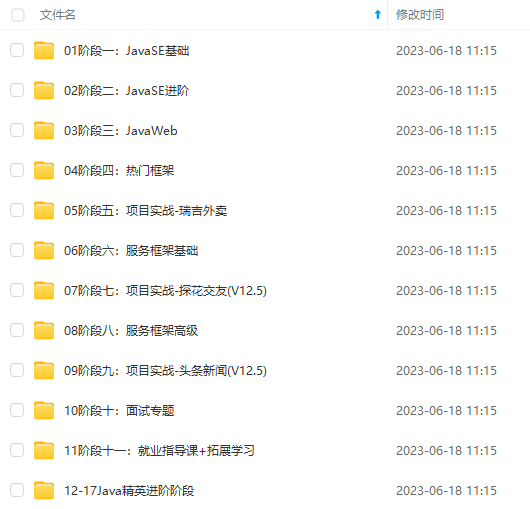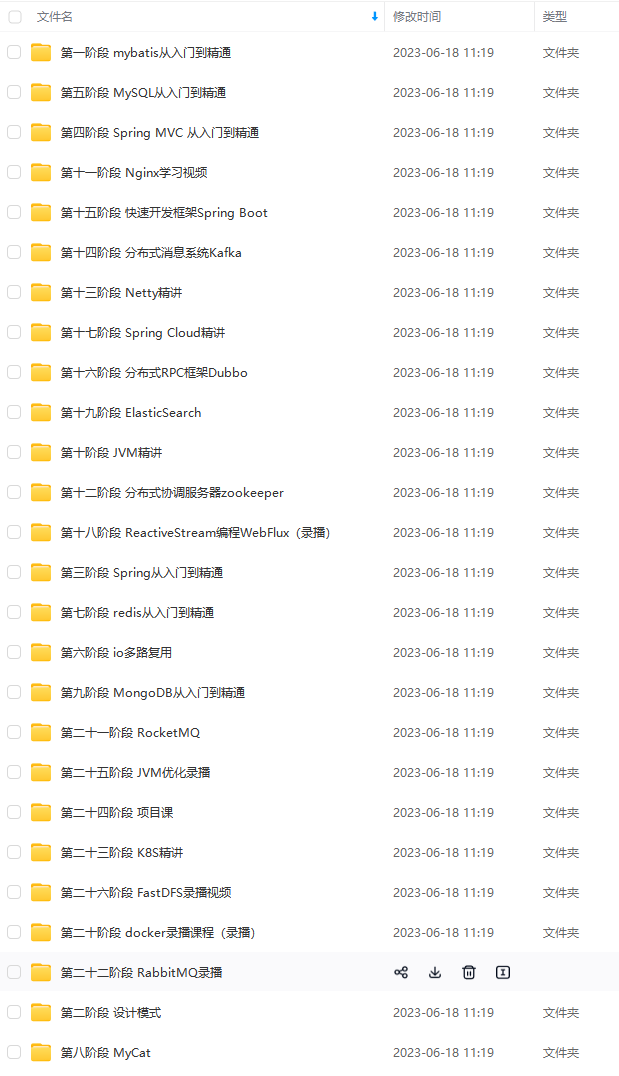spring.datasource.initialSize=5
spring.datasource.minIdle=5
spring.datasource.maxActive=20
# 配置获取连接等待超时的时间
spring.datasource.maxWait=60000
# 配置间隔多久才进行一次检测,检测需要关闭的空闲连接,单位是毫秒
spring.datasource.timeBetweenEvictionRunsMillis=60000
# 配置一个连接在池中最小生存的时间,单位是毫秒
spring.datasource.minEvictableIdleTimeMillis=300000
spring.datasource.validationQuery=SELECT 1 FROM DUAL
spring.datasource.testWhileIdle=true
spring.datasource.testOnBorrow=false
spring.datasource.testOnReturn=false
# 打开PSCache,并且指定每个连接上PSCache的大小
spring.datasource.poolPreparedStatements=true
spring.datasource.maxPoolPreparedStatementPerConnectionSize=20
# 配置监控统计拦截的filters,去掉后监控界面sql无法统计,'wall’用于防火墙
spring.datasource.filters=stat,wall,log4j
# 通过connectProperties属性来打开mergeSql功能;慢SQL记录
spring.datasource.connectionProperties=druid.stat.mergeSql=true;druid.stat.slowSqlMillis=5000
成功添加了配置文件之后,我们再来编写Druid相关的类。
首先是MasterDataSourceConfig.java这个类,这个是默认的数据源配置类。
@Configuration
@MapperScan(basePackages = MasterDataSourceConfig.PACKAGE, sqlSessionFactoryRef = “masterSqlSessionFactory”)
public class MasterDataSourceConfig {
static final String PACKAGE = “com.pancm.dao.master”;
static final String MAPPER_LOCATION = “classpath:mapper/master/*.xml”;
@Value(“${master.datasource.url}”)
private String url;
@Value(“${master.datasource.username}”)
private String username;
@Value(“${master.datasource.password}”)
private String password;
@Value(“${master.datasource.driverClassName}”)
private String driverClassName;
@Value(“${spring.datasource.initialSize}”)
private int initialSize;
@Value(“${spring.datasource.minIdle}”)
private int minIdle;
@Value(“${spring.datasource.maxActive}”)
private int maxActive;
@Value(“${spring.datasource.maxWait}”)
private int maxWait;
@Value(“${spring.datasource.timeBetweenEvictionRunsMillis}”)
private int timeBetweenEvictionRunsMillis;
@Value(“${spring.datasource.minEvictableIdleTimeMillis}”)
private int minEvictableIdleTimeMillis;
@Value(“${spring.datasource.validationQuery}”)
private String validationQuery;
@Value(“${spring.datasource.testWhileIdle}”)
private boolean testWhileIdle;
@Value(“${spring.datasource.testOnBorrow}”)
private boolean testOnBorrow;
@Value(“${spring.datasource.testOnReturn}”)
private boolean testOnReturn;
@Value(“${spring.datasource.poolPreparedStatements}”)
private boolean poolPreparedStatements;
@Value(“${spring.datasource.maxPoolPreparedStatementPerConnectionSize}”)
private int maxPoolPreparedStatementPerConnectionSize;
@Value(“${spring.datasource.filters}”)
private String filters;
@Value(“{spring.datasource.connectionProperties}”)
private String connectionProperties;
@Bean(name = “masterDataSource”)
@Primary
public DataSource masterDataSource() {
DruidDataSource dataSource = new DruidDataSource();
dataSource.setUrl(url);
dataSource.setUsername(username);
dataSource.setPassword(password);
dataSource.setDriverClassName(driverClassName);
//具体配置
dataSource.setInitialSize(initialSize);
dataSource.setMinIdle(minIdle);
dataSource.setMaxActive(maxActive);
dataSource.setMaxWait(maxWait);
dataSource.setTimeBetweenEvictionRunsMillis(timeBetweenEvictionRunsMillis);
dataSource.setMinEvictableIdleTimeMillis(minEvictableIdleTimeMillis);
dataSource.setValidationQuery(validationQuery);
dataSource.setTestWhileIdle(testWhileIdle);
dataSource.setTestOnBorrow(testOnBorrow);
dataSource.setTestOnReturn(testOnReturn);
dataSource.setPoolPreparedStatements(poolPreparedStatements);
dataSource.setMaxPoolPreparedStatementPerConnectionSize(maxPoolPreparedStatementPerConnectionSize);
try {
dataSource.setFilters(filters);
} catch (SQLException e) {
e.printStackTrace();
}
dataSource.setConnectionProperties(connectionProperties);
return dataSource;
}
@Bean(name = “masterTransactionManager”)
@Primary
public DataSourceTransactionManager masterTransactionManager() {
return new DataSourceTransactionManager(masterDataSource());
}
@Bean(name = “masterSqlSessionFactory”)
@Primary
public SqlSessionFactory masterSqlSessionFactory(@Qualifier(“masterDataSource”) DataSource masterDataSource)
throws Exception {
final SqlSessionFactoryBean sessionFactory = new SqlSessionFactoryBean();
sessionFactory.setDataSource(masterDataSource);
sessionFactory.setMapperLocations(new PathMatchingResourcePatternResolver()
.getResources(MasterDataSourceConfig.MAPPER_LOCATION));
return sessionFactory.getObject();
}
}
其中这两个注解说明下:
-
@Primary :标志这个 Bean 如果在多个同类 Bean 候选时,该 Bean 优先被考虑。多数据源配置的时候注意,必须要有一个主数据源,用 @Primary 标志该 Bean。
-
@MapperScan:扫描 Mapper 接口并容器管理。
需要注意的是sqlSessionFactoryRef 表示定义一个唯一 SqlSessionFactory 实例。
上面的配置完之后,就可以将Druid作为连接池使用了。但是Druid并不简简单单的是个连接池,它也可以说是一个监控应用,它自带了web监控界面,可以很清晰的看到SQL相关信息。
在SpringBoot中运用Druid的监控作用,只需要编写StatViewServlet和WebStatFilter类,实现注册服务和过滤规则。这里我们可以将这两个写在一起,使用@Configuration和@Bean。
为了方便理解,相关的配置说明也写在代码中了,这里就不再过多赘述了。
代码如下:
@Configuration
public class DruidConfiguration {
@Bean
public ServletRegistrationBean druidStatViewServle() {
//注册服务
ServletRegistrationBean servletRegistrationBean = new ServletRegistrationBean(
new StatViewServlet(), “/druid/*”);
// 白名单(为空表示,所有的都可以访问,多个IP的时候用逗号隔开)
servletRegistrationBean.addInitParameter(“allow”, “127.0.0.1”);
// IP黑名单 (存在共同时,deny优先于allow)
servletRegistrationBean.addInitParameter(“deny”, “127.0.0.2”);
// 设置登录的用户名和密码
servletRegistrationBean.addInitParameter(“loginUsername”, “pancm”);
servletRegistrationBean.addInitParameter(“loginPassword”, “123456”);
// 是否能够重置数据.
servletRegistrationBean.addInitParameter(“resetEnable”, “false”);
return servletRegistrationBean;
}
@Bean
public FilterRegistrationBean druidStatFilter() {
FilterRegistrationBean filterRegistrationBean = new FilterRegistrationBean(
new WebStatFilter());
// 添加过滤规则
filterRegistrationBean.addUrlPatterns(“/*”);
// 添加不需要忽略的格式信息
filterRegistrationBean.addInitParameter(“exclusions”,
“.js,.gif,.jpg,.png,.css,.ico,/druid/*”);
System.out.println(“druid初始化成功!”);
return filterRegistrationBean;
}
}
编写完之后,启动程序,在浏览器输入:http://127.0.0.1:8084/druid/index.html ,然后输入设置的用户名和密码,便可以访问Web界面了。
多数据源配置
======
在进行多数据源配置之前,先分别在springBoot和springBoot_test的mysql数据库中执行如下脚本。
– springBoot库的脚本
CREATE TABLE t_user (
id int(11) NOT NULL AUTO_INCREMENT COMMENT ‘自增id’,
name varchar(10) DEFAULT NULL COMMENT ‘姓名’,
age int(2) DEFAULT NULL COMMENT ‘年龄’,
PRIMARY KEY (id)
) ENGINE=InnoDB AUTO_INCREMENT=15 DEFAULT CHARSET=utf8
– springBoot_test库的脚本
CREATE TABLE t_student (
id int(11) NOT NULL AUTO_INCREMENT,
name varchar(16) DEFAULT NULL,
age int(11) DEFAULT NULL,
PRIMARY KEY (id)
) ENGINE=InnoDB AUTO_INCREMENT=2 DEFAULT CHARSET=utf8
注:为了偷懒,将两张表的结构弄成一样了!不过不影响测试!
在application.properties中已经配置这两个数据源的信息,上面已经贴出了一次配置,这里就不再贴了。
这里重点说下 第二个数据源的配置。和上面的MasterDataSourceConfig.java差不多,区别在与没有使用@Primary 注解和名称不同而已。需要注意的是MasterDataSourceConfig.java对package和mapper的扫描是精确到目录的,这里的第二个数据源也是如此。
那么代码如下:
@Configuration
@MapperScan(basePackages = ClusterDataSourceConfig.PACKAGE, sqlSessionFactoryRef = “clusterSqlSessionFactory”)
public class ClusterDataSourceConfig {
static final String PACKAGE = “com.pancm.dao.cluster”;
static final String MAPPER_LOCATION = “classpath:mapper/cluster/*.xml”;
@Value(“${cluster.datasource.url}”)
private String url;
@Value(“${cluster.datasource.username}”)
private String username;
@Value(“${cluster.datasource.password}”)
private String password;
@Value(“${cluster.datasource.driverClassName}”)
private String driverClass;
// 和MasterDataSourceConfig一样,这里略
@Bean(name = “clusterDataSource”)
public DataSource clusterDataSource() {
DruidDataSource dataSource = new DruidDataSource();
dataSource.setUrl(url);
dataSource.setUsername(username);
dataSource.setPassword(password);
dataSource.setDriverClassName(driverClass);
// 和MasterDataSourceConfig一样,这里略 …
return dataSource;
}
@Bean(name = “clusterTransactionManager”)
public DataSourceTransactionManager clusterTransactionManager() {
return new DataSourceTransactionManager(clusterDataSource());
}
@Bean(name = “clusterSqlSessionFactory”)
public SqlSessionFactory clusterSqlSessionFactory(@Qualifier(“clusterDataSource”) DataSource clusterDataSource)
throws Exception {
final SqlSessionFactoryBean sessionFactory = new SqlSessionFactoryBean();
sessionFactory.setDataSource(clusterDataSource);
sessionFactory.setMapperLocations(new PathMatchingResourcePatternResolver().getResources(ClusterDataSourceConfig.MAPPER_LOCATION));
return sessionFactory.getObject();
}
}
成功写完配置之后,启动程序,进行测试。
分别在spring Boot和springBoot_test库中使用接口进行添加数据。
t_user
POST http://localhost:8084/api/user
{“name”:“张三”,“age”:25}
{“name”:“李四”,“age”:25}
{“name”:“王五”,“age”:25}
t_student
POST http://localhost:8084/api/student
{“name”:“学生A”,“age”:16}
{“name”:“学生B”,“age”:17}
{“name”:“学生C”,“age”:18}
成功添加数据之后,然后进行调用不同的接口进行查询。
请求:
GET http://localhost:8084/api/user?name=李四
返回:
{
“id”: 2,
“name”: “李四”,
“age”: 25
}
请求:
GET http://localhost:8084/api/student?name=学生C
返回:
{
“id”: 1,
“name”: “学生C”,
“age”: 16
}
通过数据可以看出,成功配置了多数据源了。
PageHelper 分页实现
===============
PageHelper是Mybatis的一个分页插件,非常的好用!这里强烈推荐!!!
PageHelper的使用很简单,只需要在Maven中添加pagehelper这个依赖就可以了。
Maven的依赖如下:
com.github.pagehelper
pagehelper-spring-boot-starter
1.2.3
注:这里我是用springBoot版的!也可以使用其它版本的。
添加依赖之后,只需要添加如下配置或代码就可以了。
第一种,在application.properties或application.yml添加
pagehelper:
helperDialect: mysql
offsetAsPageNum: true
rowBoundsWithCount: true
reasonable: false
第二种,在mybatis.xml配置中添加
helperDialect=mysql
offsetAsPageNum=true
rowBoundsWithCount=true
reasonable=false
第三种,在代码中添加,使用@Bean注解在启动程序的时候初始化。
@Bean
public PageHelper pageHelper(){
PageHelper pageHelper = new PageHelper();
Properties properties = new Properties();
//数据库
properties.setProperty(“helperDialect”, “mysql”);
//是否将参数offset作为PageNum使用
properties.setProperty(“offsetAsPageNum”, “true”);
//是否进行count查询
properties.setProperty(“rowBoundsWithCount”, “true”);
//是否分页合理化
properties.setProperty(“reasonable”, “false”);
pageHelper.setProperties(properties);
}
因为这里我们使用的是多数据源,所以这里的配置稍微有些不同。我们需要在sessionFactory这里配置。这里就对MasterDataSourceConfig.java进行相应的修改。
在masterSqlSessionFactory方法中,添加如下代码。
@Bean(name = “masterSqlSessionFactory”)
@Primary
public SqlSessionFactory masterSqlSessionFactory(@Qualifier(“masterDataSource”) DataSource masterDataSource)
throws Exception {
final SqlSessionFactoryBean sessionFactory = new SqlSessionFactoryBean();
sessionFactory.setDataSource(masterDataSource);
sessionFactory.setMapperLocations(new PathMatchingResourcePatternResolver()
.getResources(MasterDataSourceConfig.MAPPER_LOCATION));
//分页插件
Interceptor interceptor = new PageInterceptor();
Properties properties = new Properties();
//数据库
properties.setProperty(“helperDialect”, “mysql”);
//是否将参数offset作为PageNum使用
properties.setProperty(“offsetAsPageNum”, “true”);
//是否进行count查询
properties.setProperty(“rowBoundsWithCount”, “true”);
//是否分页合理化
properties.setProperty(“reasonable”, “false”);
interceptor.setProperties(properties);
sessionFactory.setPlugins(new Interceptor[] {interceptor});
return sessionFactory.getObject();
}
注:其它的数据源也想进行分页的时候,参照上面的代码即可。
这里需要注意的是reasonable参数,表示分页合理化,默认值为false。如果该参数设置为 true 时,pageNum<=0 时会查询第一页,pageNum>pages(超过总数时),会查询最后一页。默认false 时,直接根据参数进行查询。
设置完PageHelper 之后,使用的话,只需要在查询的sql前面添加PageHelper.startPage(pageNum,pageSize);,如果是想知道总数的话,在查询的sql语句后买呢添加 page.getTotal()就可以了。
代码示例:
public List findByListEntity(T entity) {
List list = null;
try {
Page<?> page =PageHelper.startPage(1,2);
System.out.println(getClassName(entity)+“设置第一页两条数据!”);
list = getMapper().findByListEntity(entity);
最后
自我介绍一下,小编13年上海交大毕业,曾经在小公司待过,也去过华为、OPPO等大厂,18年进入阿里一直到现在。
深知大多数Java工程师,想要提升技能,往往是自己摸索成长,自己不成体系的自学效果低效漫长且无助。
因此收集整理了一份《2024年Java开发全套学习资料》,初衷也很简单,就是希望能够帮助到想自学提升又不知道该从何学起的朋友,同时减轻大家的负担。



既有适合小白学习的零基础资料,也有适合3年以上经验的小伙伴深入学习提升的进阶课程,基本涵盖了95%以上Java开发知识点,不论你是刚入门Android开发的新手,还是希望在技术上不断提升的资深开发者,这些资料都将为你打开新的学习之门!
如果你觉得这些内容对你有帮助,需要这份全套学习资料的朋友可以戳我获取!!
由于文件比较大,这里只是将部分目录截图出来,每个节点里面都包含大厂面经、学习笔记、源码讲义、实战项目、讲解视频,并且会持续更新!
的sql前面添加PageHelper.startPage(pageNum,pageSize);,如果是想知道总数的话,在查询的sql语句后买呢添加 page.getTotal()就可以了。
代码示例:
public List findByListEntity(T entity) {
List list = null;
try {
Page<?> page =PageHelper.startPage(1,2);
System.out.println(getClassName(entity)+“设置第一页两条数据!”);
list = getMapper().findByListEntity(entity);
最后
自我介绍一下,小编13年上海交大毕业,曾经在小公司待过,也去过华为、OPPO等大厂,18年进入阿里一直到现在。
深知大多数Java工程师,想要提升技能,往往是自己摸索成长,自己不成体系的自学效果低效漫长且无助。
因此收集整理了一份《2024年Java开发全套学习资料》,初衷也很简单,就是希望能够帮助到想自学提升又不知道该从何学起的朋友,同时减轻大家的负担。
[外链图片转存中…(img-1PaBEdfl-1715066831327)]
[外链图片转存中…(img-kOyIIwI1-1715066831328)]
[外链图片转存中…(img-1Iv4fben-1715066831328)]
既有适合小白学习的零基础资料,也有适合3年以上经验的小伙伴深入学习提升的进阶课程,基本涵盖了95%以上Java开发知识点,不论你是刚入门Android开发的新手,还是希望在技术上不断提升的资深开发者,这些资料都将为你打开新的学习之门!
如果你觉得这些内容对你有帮助,需要这份全套学习资料的朋友可以戳我获取!!
由于文件比较大,这里只是将部分目录截图出来,每个节点里面都包含大厂面经、学习笔记、源码讲义、实战项目、讲解视频,并且会持续更新!






















 59
59

 被折叠的 条评论
为什么被折叠?
被折叠的 条评论
为什么被折叠?








